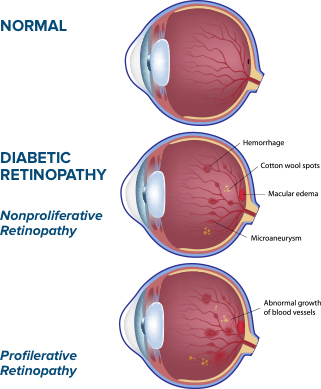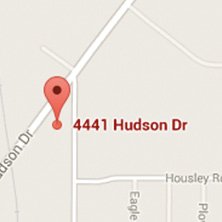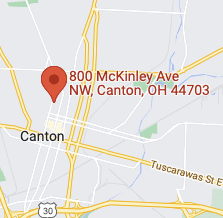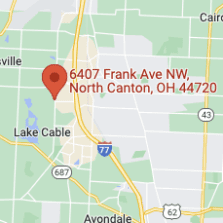What is Diabetic Retinopathy?
Diabetic retinopathy is a serious, potentially blinding complication of diabetes that causes damage to the retina. Diabetes is a disease where there are high blood sugar levels, which can cause damage to blood vessels throughout your body. In the retina, diabetes can affect the tiny blood vessels that nourish it. When the vessels are damaged, they can:
-
Leak serum, blood, and lipids into the retina
- Distort your vision
This eye disease will affect almost 80% of those who have had diabetes for at least 20 years and is the leading cause of blindness in individuals aged 20-64.
Progressive damage to blood vessels causes them to:
-
Breakdown and shutdown, which can lead to new abnormal blood vessel growth called proliferative retinopathy
-
In its most advanced stage, causes retinal scarring and potentially result in blindness
Diabetic Retinopathy Symptoms
In the early stages of diabetic retinopathy, you may not have any symptoms at all. This is why eye exams are so important. As the condition progresses, you might notice: 
-
Blurry or fluctuating vision
-
Seeing eye floaters
-
Difficulty seeing at night
-
Colors appear faded or washed out
-
Dark or empty areas in your vision
-
Partial or complete vision loss in severe cases
Diabetic Retinopathy Diagnosis
Diabetic retinopathy progresses over time and ultimately leads to vision loss. In its early stages, patients do not notice symptoms. With routine, dilated, yearly, eye examinations and early treatment, 90% of those affected with advanced diabetic retinopathy can prevent vision loss.
Diabetic Retinopathy Treatment
Diabetic retinopathy can be treated with injection therapy and laser therapy. 
Injection therapy may be indicated because swelling from diabetes has affected the center of your vision. Injections can be administered at Northeast Ohio Eye Surgeons under local anesthesia. The frequency of required injections will be determined at each visit with your doctor.
During laser therapy, a high-energy beam of light is focused onto the damaged blood vessels, which seals off the leaking. However, it may take more than one treatment to seal off the damaged blood vessels.
The best way to control diabetic retinopathy involves early detection of the disease, along with a commitment from the patient to control his or her diabetes. This includes
-
Monitoring blood sugar levels regularly
-
Maintaining a healthy weight
-
Exercising consistently
Diagnosis of Proliferate Retinopathy
Proliferate retinopathy occurs when damaged blood vessels leak and the retina does not get enough oxygen and other vital nutrients it needs to function. This complication stimulates new blood vessel growth. The new blood vessels are fragile and prone to hemorrhaging, which can then destroy the retina.
Treating Proliferate Retinopathy
Proliferate retinopathy can be treated with laser therapy, known as pan-retinal photocoagulation. During this treatment, the laser is used to apply hundreds of small burns to the retina, away from the macula. This procedure shrinks the abnormal vessels, but side vision and night vision could be permanently affected. However, without treatment, total blindness can occur.
If a large hemorrhage occurs in the jelly-like substance called the vitreous, located in the front of the retina, a surgical procedure called a vitrectomy may be needed. This involves removing the cloudy and blood-filled vitreous and replacing it with a clear salt solution.
Panretinal Photocoagulation
Although laser and vitrectomy treatments are successful, they do not cure diabetic retinopathy. Prevention of retinopathy is the best method to preserve vision. Checking blood sugar, controlling diet, and increasing exercise is the best way to minimize your risk of developing diabetic retinopathy. If you are diabetic, a dilated, yearly, eye examination is mandatory to diagnose retinopathy before it enters into an advanced stage.
What Is Tepezza?
If you have Thyroid Eye Disease (TED), Tepezza may provide the relief you need. Tepezza is the first and only prescription medication approved by the FDA to treat TED. As an infusion medication, Tepezza is administered through an IV. This treatment consists of eight total infusions which generally take five months to complete.
How Does Tepezza Work?
TED causes the muscle and fat behind the eyes to swell. By targeting TED at its source, Tepezza reduces this swelling and relieves symptoms such as:
- Eye bulging
- Double vision
- Blurry vision
- Eye pain
- Eye redness
- Eyelid swelling
- Light sensitivity
- Intraocular pressure
- Dry eyes
- Teary eyes
- Eyelid retraction
- Vision loss
- Color vision loss
Get the Eye Relief You Need at Northeast Ohio Eye Surgeons
Whether you suffer from bulging eyes or TED induced eyelid swelling, Tepezza can provide the lasting relief you’re looking for. Schedule an appointment with Dr. Rachel Davis to determine whether Tepezza is right for you. Besides being a respected name in the field of oculoplastic surgery, Dr. Davis is one of the only Tepezza specialists in Northeast Ohio. We look forward to seeing you soon at a NorthEast Ohio Eye Surgeons location near you.
Diabetic Retinopathy FAQs
What is the first sign of diabetic retinopathy?
The first signs are often subtle, like blurry vision, floaters, or having trouble seeing at night. Many people don’t notice symptoms at all in the early stages, which is why regular eye exams are essential for catching the condition early.
Can diabetic retinopathy be reversed?
Once damage to the retina has occurred, it is unlikely that it can be fully reversed. However, treatments such as laser therapy, injections, and managing blood sugar can slow or stop the disease from getting worse.
How quickly does diabetic retinopathy progress?
The progression of diabetic retinopathy depends on diabetes duration, age, and blood sugar control. It may take years to worsen, but poorly controlled blood sugar can make it advance faster.
What treatment options are available for diabetic retinopathy?
Treatment for diabetic retinopathy may include laser therapy, eye injections, or surgery for advanced cases. Your doctor will choose the best option based on the stage of the disease.
Can you prevent diabetic retinopathy if you have diabetes?
You can lower your risk by keeping your blood sugar, blood pressure, and cholesterol under control. Regular eye exams are key because catching changes early makes treatment more effective.
Tepezza FAQs
Is Tepezza permanent?
Tepezza is a drug for the treatment of thyroid eye disease. Thyroid eye disease is a
rare, autoimmune disease characterized by proptosis (a condition where the eyes are
pushed forward and bulge outward) leading to eye pain, double vision, and difficulty
closing the eyelid.
Who Qualifies for Tepezza?
Patients who have active thyroid eye disease and meet specific clinical criteria are a
candidate for the drug.
What causes thyroid eye disease symptoms?
Graves’ Orbitopathy is an autoimmune condition. It attacks the tissue surrounding the
eye causing inflammation in the tissues around and behind the eye.
How long does Tepezza infusion last?
In some patients, results will start to show at 6 weeks. For other patients, it may take as
long as 24 weeks. Improvements can be observed for up to about a year.














